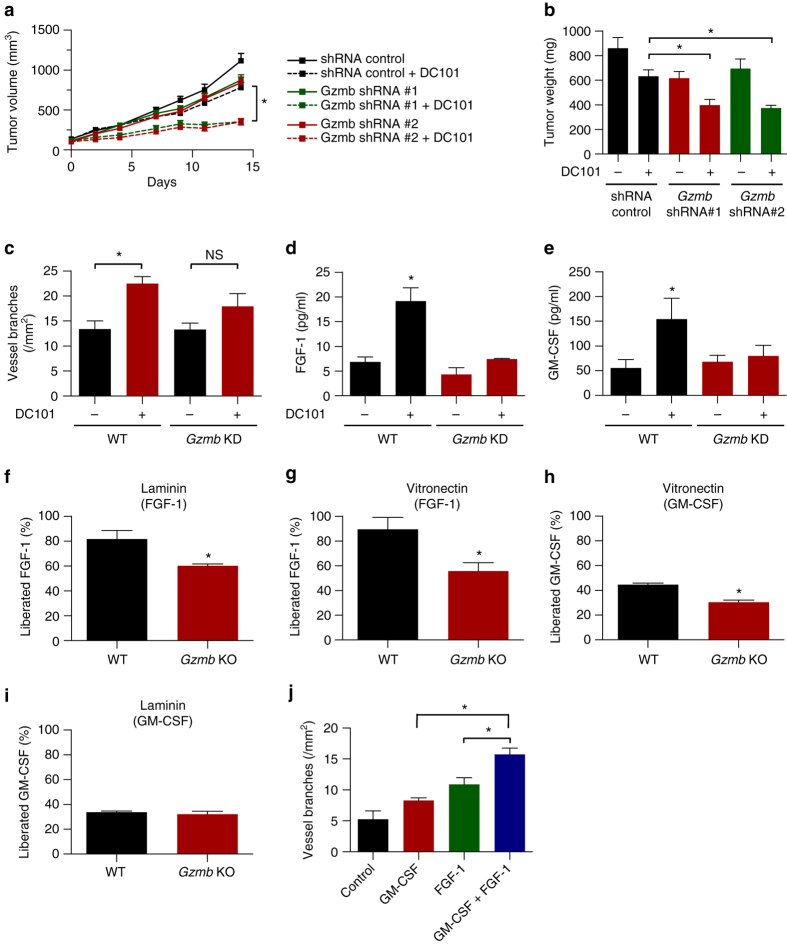Fig. 4.
Mast cell-derived granzyme b confers resistance to AAT by releasing ECM-bound FGF-1 and GM-CSF. a Subcutaneously growing Panc02 tumors shown as tumor volume. Panc02 cells were injected together with WT- or GZMB KD-BMMC into the flanks of C57Bl/6J (WT) mice. After randomization animals received treatment with placebo or 20 mg/kg DC101 (n = 8/8/8/6; *p < 0.05; two-way ANOVA). b Weight of end-stage Panc02 tumors at day of euthanasia (n = 8/8/5/5; *p < 0.05; one-way ANOVA). c Tube formation assays of HUVEC in the presence of tumor-conditioned media from tumors transplanted together with WT and GZMB KD-BMMC and treated with placebo or 20 mg/kg DC101 (n = 8/8/8/6; *p < 0.05; one-way ANOVA). d, e ELISAs showing upregulation of free FGF-1 (d) or free GM-CSF (e) in tumor-conditioned media (n = 3–6; *p < 0.05; one-way ANOVA). f–i Mobilization of FGF-1 (f, g) or GM-CSF (h, i) from a laminin or vitronectin matrix using conditioned media from WT or Gzmb KO-BMMC (n = 3; *p < 0.05; two-tailed t-test. j Tube formation assays of HUVEC using 5 ng/ml GM-CSF or FGF-1 (n = 3–4; *p < 0.05; one-way ANOVA). Results are shown as representative means ± s.e.m

